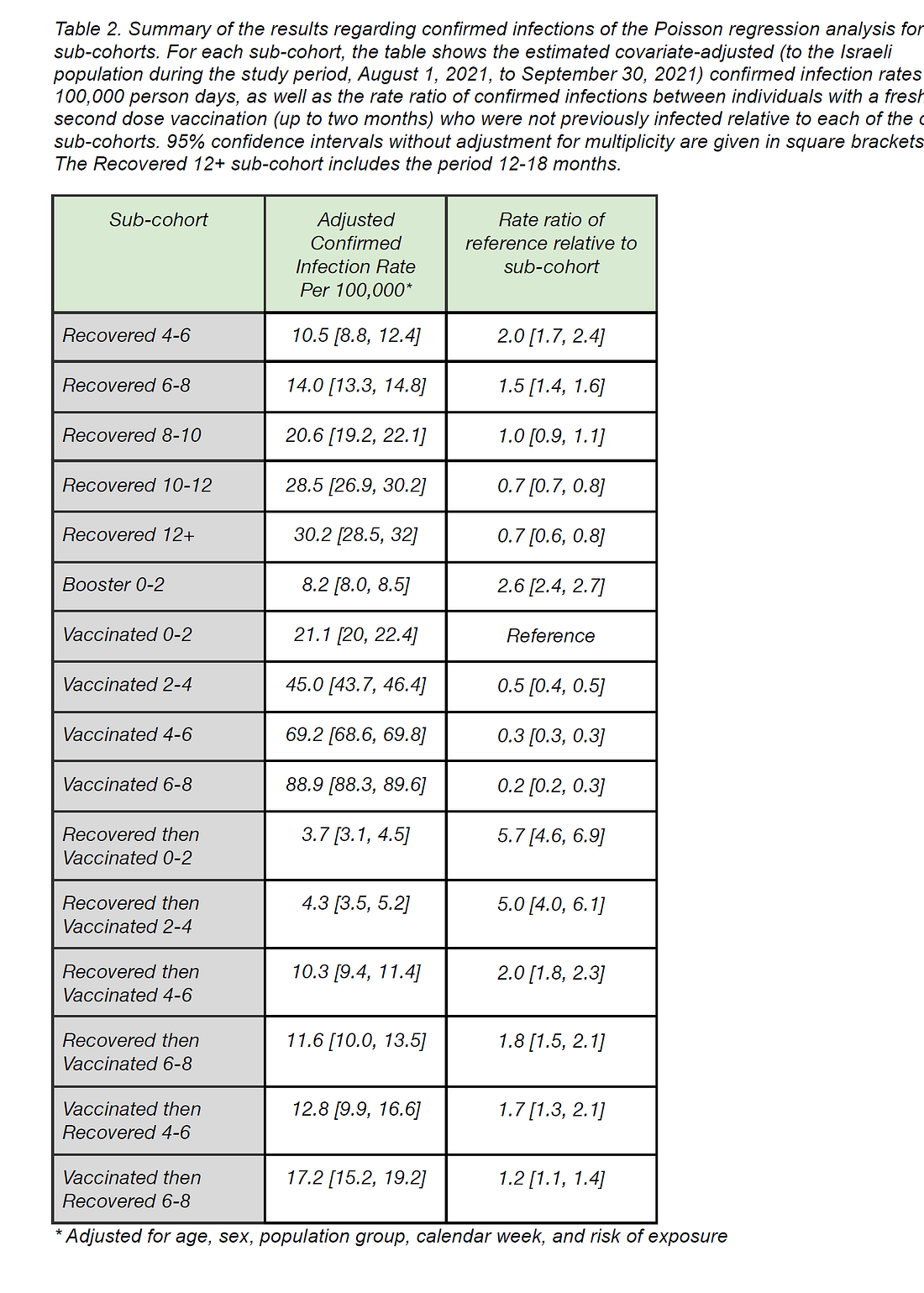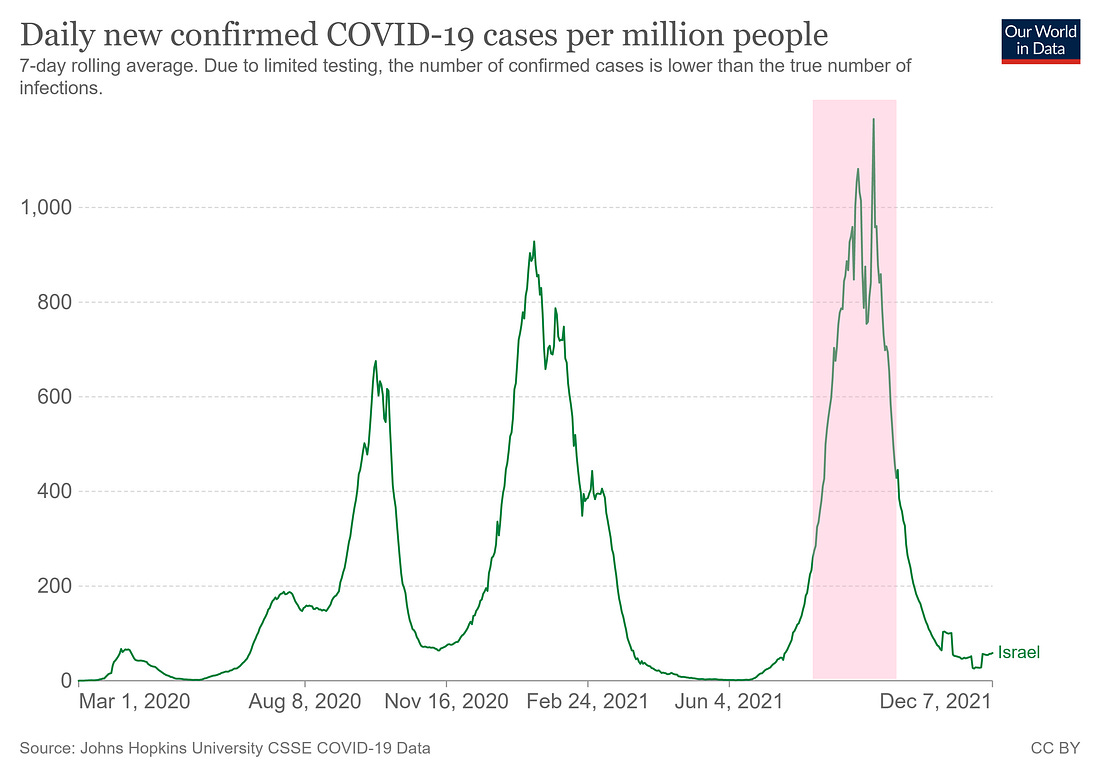Bad Cattitude | 10 Dec 2021
Why so many people are misreading the israeli study on vaccine vs recovered efficacy and what it really means
A LOT of people seem to be looking at this graph and saying “see, look, hybrid immunity from having had covid and being vaccinated dramatically exceeds the value of just having had covid.” (SOURCE)
and it’s easy to see why. but this chart is as much optical illusion as data presentation and one should take care in reading it.
can you see it?

here, let me help:

see it now?
they added a long tail to “recovered” but not to the others.
in fact, this is the only comparable data shown:

“recovered” was being shown with FAR longer timeframes. thus, if you look casually, it looks to underperform hybrid significantly.
but it doesn’t, especially in the case of getting vaxxed first then getting sick. full data here:

in fact, it looks like getting vaxxed then getting sick then recovering leads to worse functional immunity than just getting sick and recovering. it’s 12.8 and 17.2 at 4-6 mo and 6-8 mo vs 10.4 and 14 for recovered.
it’s also worse than getting sick, then getting vaxxed. (12.8, 17.2 vs 10.3, 11.6) the order of occurrence matters greatly.
together, THAT is a clear marker for OAS. (original antigenic sin)
it means your body is over-trained in narrow response and will fail to adapt to future pathogens experienced.
if you get vaxxed first, then get sick, you never develop the full panoply of responses. other studies have shown this issue around the development of nucleocapsid antibodies (which tend to be a source of sterilizing immunity, unlike S protein antibodies).
but this does not happen if you get sick first, then vaxxed. because you already learned those things.
this shows that the vaxx is blocking the learning. and now we have clinical outcome data to show it.
this is just not a pattern you’d see (order of vaxx and illness affecting outcome) without something akin to OAS. discussion here:
we can pull some other interesting conclusions from this data:
- recovery 6-8 mo (14 cases per 100k risk days) FAR outperformed vaccination alone (89 c/100k rd) . it’s 1/6th the risk. (84% risk reduction)
- we cannot compare booster to recovered because booster is ONLY 0-2 months and we do not have recovered data for that timeframe. (many seem to be getting this wrong, again likely because the graphic was hard to read and easy to mistake on comparability)
- hybrid immunity looks unexciting in absolute terms vs simple recovery. it’s a drop from 14 cases per 100k risk days to 11.6, so that’s 2.4 cases prevented per 274 risk years, 1 case per 114 years.and this is just a PCR detectable case, not anything serious, severe, or even symptomatic. it might not even be live virus.compare that to the side effect profile of the vaccines. anyone think this provides a good risk reward? because i’m not seeing it.boosters act like d2 and you’ll need 1-2 of them a year. the risk of needing medical care from vaxx is about the same as the risk of getting PCR detectable virus. pile on the 25% “unable to do daily activities” and this looks like a rotten trade.

further note:
this was a 2 month study period. it was done during peak seasonal surge.
thus, attempts to extrapolate things like reinfection risk overall will run much too high for typical years etc. this data is comparable to itself, but difficult to use vs other data or to generate an annualized risk profile. it’s like trying to compare snowfall in jan and feb to a full year.
period of study shown in pink.



